Malaysia sits at the nexus of some very interesting commercial lines. I say interesting, because not only does the society acknowledge and condone their existence, but in a way, so does the government.
If you go to Kuala Lumpur, the tourist spot that everyone tells you you should visit is Petaling Street, or fondly known as Chinatown where knock offs abound: pirated handbags, wallets, watches, DVDs and what have you.
In all the government and non-government travel brochures, Petaling Street is touted as "the" place to get cheap goods, but stops short of revealing its ethical dilemma. The problem is, most of the goods aren't out and out pirated. They are overruns, meaning, they were produced at the same factory contracted to produce the originals. They are just as good as the real thing. And if there ever was an analogy that worked for plagiarism in silat, Petaling Street would be it.
Silat could properly be classified as Traditional Knowledge if we go by the definition here. Traditional Knowledge is deemed to belong to a community, but an issue arises when segments within that community cross-claim it to belong to a smaller group, a family or even an individual.
This was not always a problem. Long before there were 'schools' and 'styles', there was a master and a student. This minimum of a pair was the 'school' and what passed between them was the relationship.
From my surveys among silat masters, most of them agree that knowledge does not pass from them to their students, because they ultimately do not know what their student receives or understands. This is rooted in the sufi conception of knowledge, that when someone teaches something, it is not the facilitation skills of the teacher, nor the sheer intellect of the student that creates understanding. It is that Allah reveals this knowledge to both the teacher and his student at the same time with differing insights.
The master could, in his process of explaining a concept he studied, gain an updated enlightenment. Or, it is the student who gets it immediately, without the master having to say too much. This, especially in silat circles who are deeply influenced by Tariqat, is called "Haq Diri" or granted knowledge for one individual.
Because the master and student now have 'different' knowledge, and the master acknowledges the student as a master himself, they are now masters of different styles. Their own "Haq Diri".
When one studied with one's master, the master's duty was always to lead one on the right path of understanding, of seeing the universe in a holistic manner, which made Silat applicable in both wartime and peacetime. You'd use the same methodology to fight or debate, in diplomacy or marital facilitation, in economy or government and it was always your interpretation of the same basics.
Which means, whatever knowledge you learned was indisputably your right. This knowledge had good tendencies and would always guide its user towards good. However, in Islam, a right to something carries certain responsibilities, and it is understood that when abused or misused, can lead to the understanding being "repossessed" by Allah and in its place, false knowledge that resembles the original which guides its user, by virtue of the evil in his heart, towards evil.
A simple way of stating it is that the status of the knowledge changes from being "authorised" to "unauthorised".
Now, although this "authorisation" process happens spiritually, there are masters who claim to be intermediaries or are able to assess that his student has met the conditions for authorisation, in effect, becoming Allah's earthly authorised representative. For example, when a master grants masterhood to his student, he also places conditions, most of which are sourced from Islamic Law.
He is deemed to have lost his right to the knowledge his master facilitated if he kills without due reason, fornicates, commits adultery, steals, lies and so on. In one way, the conditions are also parameters to safeguard the sanctity of the knowledge.
We have to remember that this was a time when there was no style names, no uniforms and certainly no school colours. There was no plagiarism because there was no way to identify one from another. Everyone was graded on their skills in battle, or their wisdom in the village, not by how many students they have or what fancy techniques they employed.
They were valued more for their piety than their haughtiness. It was this humility that signalled the height of their skill and gave credence to their spiritual authenticity.
This method of authentication is practised by and an accepted part of many silat styles in Malaysia, and the modernisation of silat is threatening this age old tradition. Styles that are legally registered, are recognised by the government as organisations, and not as traditionally passed down schools.
This opens up opportunities for opportunists who see financial or material gain in leading his own version of a particular school. There have been cases where silat syllabi have been lifted wholesale and imported into another school under a different name.
Thus, in one way, law helps control the copyright of the master's knowledge, but it also robs him of many other rights, which he was granted under the spiritual authenticity system. Since there are very few things in culture that can be copyrighted, we are forced to accept it when dissenting factions split off from the main, and continue teaching the main art.
In extreme cases, offshoots actually manage to legally copyright their master's arts and claim them as their own.
Until the day that the law catches up with spiritual authentication, we will see more plagiarism of the efforts of masters who know nothing of the law and what it can and cannot protect.









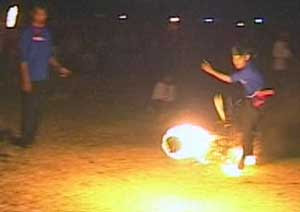

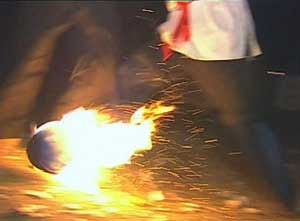


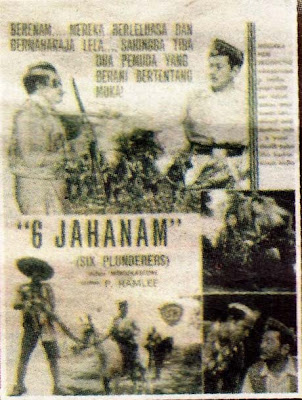


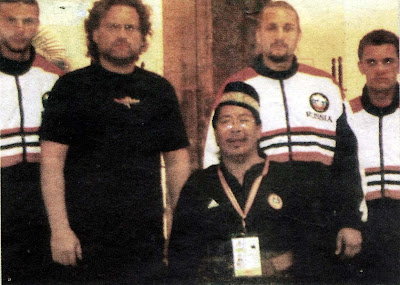
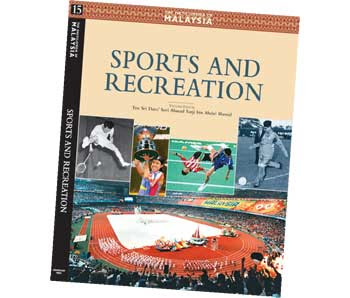

.jpg)

